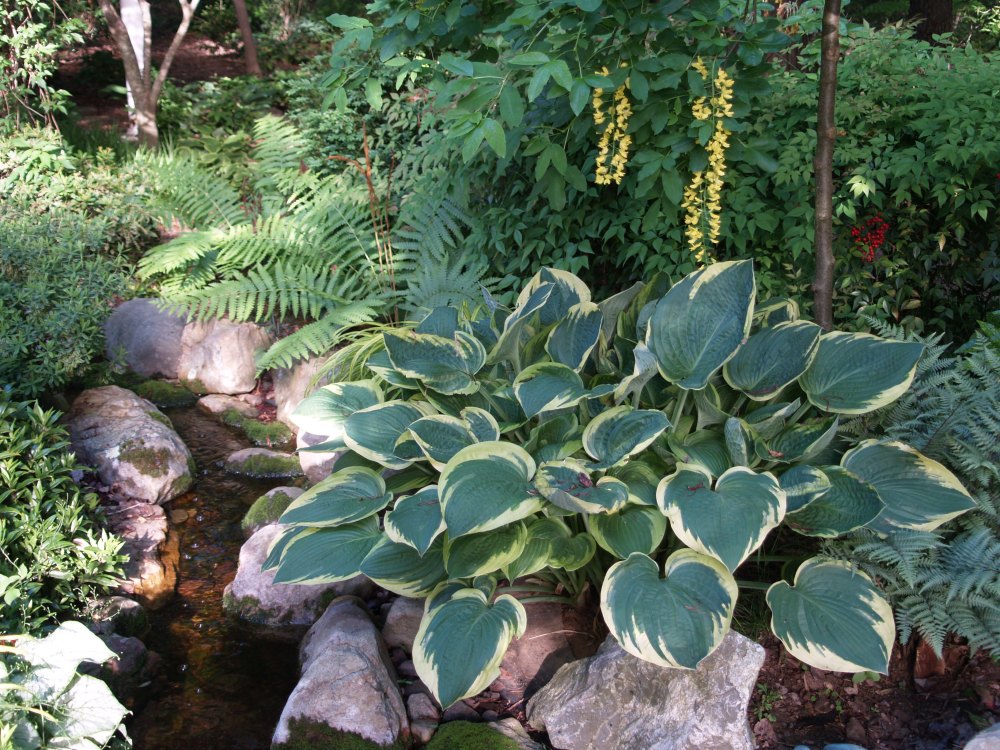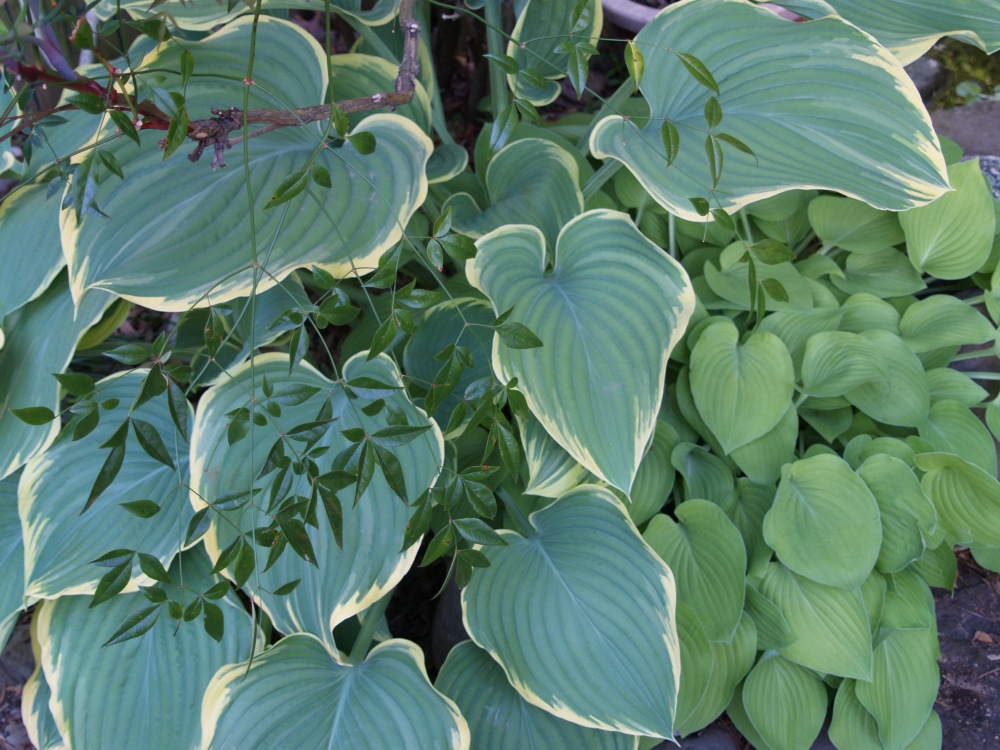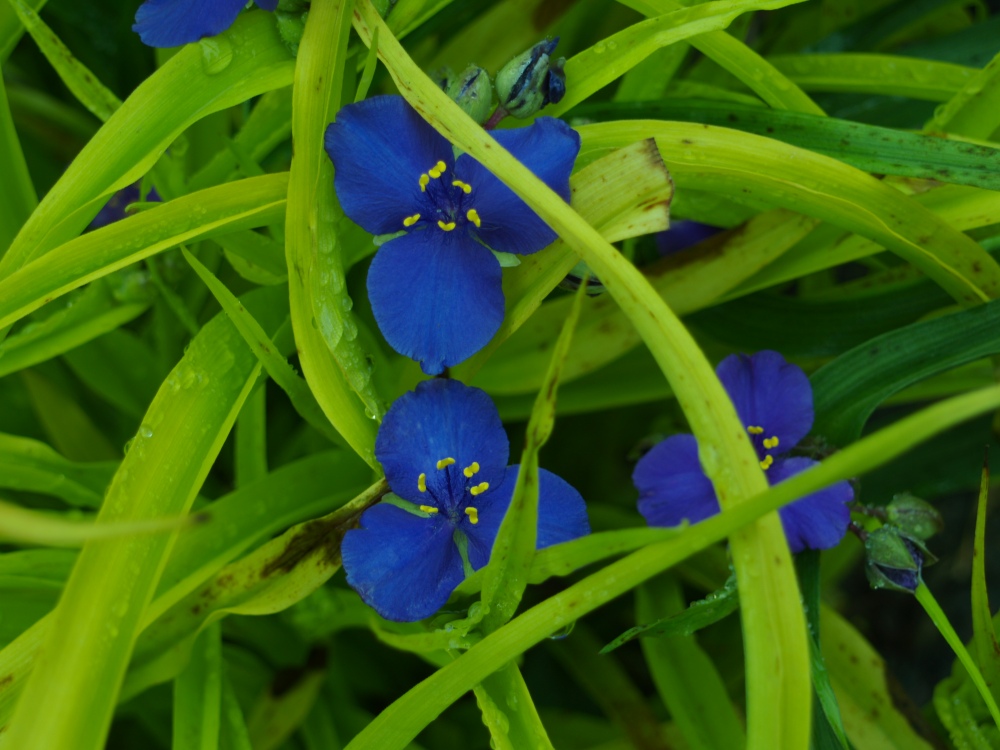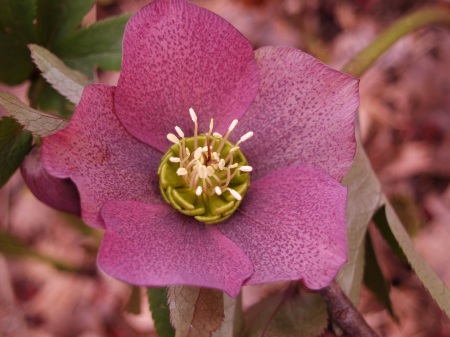I am continually dismayed to hear the numbers of gardeners who have problems with deer, and more than that, how many report poor success with deer repellents. In place of repellents they prescribe varied remedies, from ugly, tall fences to exotic, home brewed concoctions, to recommending planting nothing but deer resistant plants. At the risk of boring regular readers, a bit of background is necessary.
At one time there were over a hundred varieties of hostas in the garden, along with many treasures that proved to be choice eating for deer as nearby farmland was developed into houses. The hostas took a beating, but for a few years I was determined to let the deer have their fair share as long as they left enough for me. It should be no surprise that the deer didn’t cooperate, and plants began disappearing at an alarming rate. Finally, my wife spurred me to action, saying if I didn’t do something she was going to buy a gun to take care of the deer herself.
I began spraying a repellent under the strict supervision of my wife. I’m not so good at keeping a regular routine, so my wife marked the first of each month on her calendar beginning in May to remind me to spray. After a year (or two) I was finally trained to do this without her reminders, in good part because I was encouraged by the success of the repellents in dissuading deer from nibbling on the hostas. 
The reward from spraying was easily recognizable. Many of the hostas returned, and only an occasional plant that was missed in spraying was bothered at all. My acre of garden takes only a half hour to spray each month, and the only problem I have (besides skipping over a plant or two) is with fast growing perennials in mid spring. Spiderworts are prime eating for deer, and from the first of the month to the middle they might grow eight or ten inches in May. The lower foliage is sprayed, but this isn’t enough to persuade deer not to eat the tops, so I keep a half filled sprayer to go around a second time when they’re growing fastest.
There’s no disputing that deer will eat just about anything if they’re hungry enough, but some plants are so bitter, distasteful, or even mildly poisonous that deer will go far out of their way not to eat them. There are enough of these to make a decent garden, but as much as I love hellebores and ferns, I need more than only deer resistant plants in my garden. 
Whenever I read that a gardener has had only temporary success with deer repellents, I’m confident enough due to my success to figure that they sprayed once, then didn’t follow up a month later. I read that the repellents wash off in the rain, but I’ve sprayed a week before hurricanes and tropical storms that dropped many inches of rain in a month, with no problems. And, if the repellent was washed off, I’d know it. There are not only deer in the neighborhood, but deer bed down in the brush and brambles that border my garden, and there are always deer tracks in the wet areas of the lower garden where grass has been worn to mud by the seeming stampede of deer rushing to visit other gardens for a meal.
On the chance that deer might become immune to the taste or scent of a single repellent I have alternated between two types. Commercial brands are produced with a sticker that prevents their washing off in the rain, and I’ve delayed as long as six weeks before seeing evidence that deer return. I suspect that home brewed concoctions lack these stickers, the reason for their temporary success.
With confidence that repellents will protect the garden I’m not concerned at all when I’m planting whether a plant is deer resistant or not. I don’t spray everything, since I know that plum yews, hellebores, euphorbias, ferns, and many more plants are dependably resistant, but it’s comforting that deer don’t dictate my plant selections.
I agree, but there seems to be one plant that the deer will still eat, even when sprayed on nicely, and this is the sunflower. It does not happen immediately after it is sprayed but usually after a strong rain. And I spray mine regularly. Started to spray the sunflower on a biweekly basis, in hopes that at least some survives. Out of 70+ plants, I have only about 10 left standing.
All of my other plants are fine. Never saw any damage when sprayed regularly.
Hi Dave, What brand(s) of spray deer repellent do you use? Do you think adding a retail available adherent will help keep the spray effective?
I’m using Bobbex and DeerAway or DeerOff, i can’t keep straight which. I’ve also heard that Liquid Fence works well, and I don’t think there’s much difference in the effectiveness of any of the main brands. One type I used that claimed particular effectiveness through winter had a latex base that covered the leaves in white that persisted through into the spring, which was a bit too much, though I don’t recall the brand. In November I use a double concentration of one of the repellents, and it works fine.
AWESOME!!!
Deer, its what’s for dinner! 🙂
we back onto seneca park, so deer are a hugh problem. the one tweek to your solution that i would recommend is to buy a barbaque sauce called “dave’s insanity sauce” and add about 6-10 drops per gallon of made up repellent. if the deer decides to take a nibble in spite of the smell, it will never do it a second time.
Gee, Dave what you propose sounds great, but what would you suggest when next door neighbors set up elaborate Bambi feeding stations? Moving isn’t currently an option. We’ve sprayed, used predator urine & finally resorted to fencing certain areas (especially the veggie garden). Your wife’s idea really appeals to me except current laws protect the deer but ignore the $$ we’ve spent on plants, repellants, tick sprays, vet bills for doggie lyme disease prevention etc.
While killing deer to control their numbers can be argued as a legitimate and humane control method, my purpose in spraying repellents is to encourage deer to eat elsewhere. They’re in the garden, but because the plants are distasteful they keep going to eat somewhere else. It seems that a neighbor feeding them only encourages them to eat there, and not in your garden.
I suggest giving one of the brands like Bobbex, Liquid Fence, Deer Away, or Deer Off another try, but document your spray intervals to be certain that you are spraying no more than a month apart. Purchase two brands and alternate them for the best effectiveness.
Thanks for the reply. I was hoping to learn something abt a product we haven’t tried. As for feeding deer, even Bambi gets bored on a steady diet of deer corn & looks for additional snacks including my rhodies, azaleas & knock outs that I’ve purchased at your establishment. They just adore the tender new growth. Thinking of trying a trick gleaned from an old WV farmer, chicken wire placed on the ground in select areas plus a more aggressive repellant program just to get them to move on. I don’t dislike the deer, does & bucks, that populate my heavily wooded suburban area, just the plant damage & the threat of spreading lyme disease. Thanks again
Can you ise these products on plants near dogs?
None of the deer repellents contain poisons. They have either a foul taste or a scent such as wintergreen that repels deer. So, there is no danger to pets or wildlife.